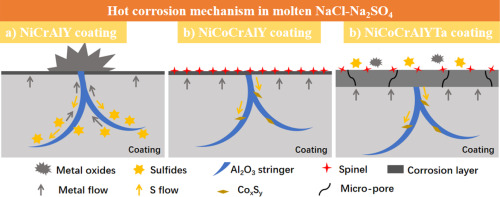
High Temperature Hot Corrosion Resistance of Coated Stainless Steel at NaCl/Na2So4 Mixtures Environments
High Temperature Hot Corrosion Resistance of Coated Stainless Steel at NaCl/Na2So4 Mixtures Environments
Lect. Dr. Ayad A. Albadrani
College of Engineering / University of Anbar
https://www.iasj.net/iasj/download/3b6ad20cc504a3d7
In this study , Silicon and Aluminum with and without cerium were simultaneously co- deposited by diffusion into austenitic stainless steel (AISI 316L) substrates, by a single-step pack cementation process. Cyclic hot corrosion tests were conducted on coated and uncoated austenitic stainless steel alloy with 50wt.% NaCl+50wt.%Na2So4 deposits at 750C° for 120h at 10h cycle. The results show that the hot corrosion resistance of both coated stainless steels was significantly improved as compared with the uncoated steels. The scale formed on coated stainless steel after oxidation in mixture environment was consisted of NiAl2O4, NiFe2O4 and NiCr2O4. Optical metallographic (LOM) and X-ray diffraction (XRD) was used to characterize the resulting coating and cyclic hot corrosion structures.
Key words: Pack cementation, Hot corrosion, Oxidation, Coatings stainless steels.

1- The oxidation kinetics of both coated and uncoated systems follows parabolic rate law.
2- Both coated systems revealed good cyclic oxidation resistance compared with uncoated stainless steel 316L under the same identified condition.
3- The addition of 0.5 wt. % cerium to silicon modified aluminize diffusion coating, improved the hot corrosion resistance of coated stainless steel substrates.
4- The Na2So4/NaCl salt mixture are more corrosive than that of 100 wt.%Na2So4 environment.
.png)



.png)